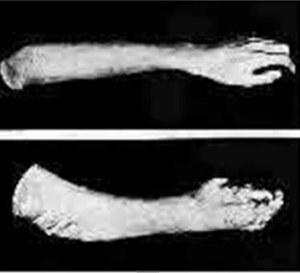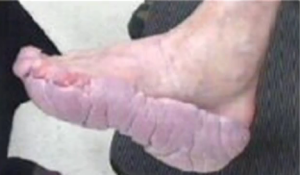What is Proteus Syndrome ?
The renowned “Elephant Man”, Joseph Merrick, was believed to be afflicted by Proteus Syndrome (PS). The syndrome causes several abnormal tumors in different parts of the body, partial gigantism, unusual bone development and skin overgrowth. The effects of PS vary with every individual. Some suffer from the mild form of PS while others endure the more severe form.
Mild Proteus Syndrome still needs medical intervention due to the danger of developing serious complications and progressing into more severe PS. There is no way to prevent the syndrome from happening, and its treatment is aimed at managing the associated symptoms to improve the patient’s quality of life.
How common is Proteus Syndrome?
Tracking the down the true prevalence of the syndrome is difficult because it is very rare and variable. It had been estimated that PS affects 1 out of 1 million people. There had been more than 50 cases reported across the globe. Studies showed that the syndrome affects both male and female with the absence of genetic predisposition – which means it is not inherited. The syndrome affects people of any race and nationality.
Proteus Syndrome is a congenital disorder but the symptoms are not evident at birth. A child can be born without any evident abnormality but develop the symptoms later on. It was first described in 1979; and in 1983 was named after the polymorphous god in Greek mythology, Proteus, due to the variable symptoms shown by four boys who are not related to each other.
Proteus Syndrome symptoms
The severity and frequency of the syndrome differ from one person to another and this is the reason why there is a wide variety of PS symptoms. Patchy and disproportionate overgrowth of bones, organs, hands and feet are common. Other distinctive manifestations of the disorder include:
- Skeletal malformations
Affected individuals often have skeletal malformations marked by irregular bone structure such as extreme bone growth, drawing out of long bones, solidified connective tissues and atypical thinning of bones. The spine is also curved sideways.
- Tumors
Often non-cancerous or benign, these tumors may grow on or underneath the skin. These masses often remain unchanged but some sometimes grow rapidly. There are also cases wherein these tumors shrink over time.
- Abnormal skull and fat deposits
Some of those afflicted by PS also have abnormally-shaped skulls or large heads. Sufferers may likewise have either fewer or greater fat deposits all over the body.
- Hypertrophy or hemihypertrophy
Hypertrophy is referred to as the condition wherein the size of a particular part of a tissue or organ has increased. On the other hand, hemihypertrophy is a condition in which the overgrowth is only evident on one part of the body.
- Plantar hyperplasia
This is characterized by overgrowth and deep lines of soft tissues on the soles.
Due to the rarity of Proteus syndrome, healthcare providers find it hard to determine the number of health problems and medical disorders that occur as a result of the condition. What they do know is that the syndrome affects the learning abilities of the patients due to the effects of tissue and blood overgrowth in the nervous system. The most deadly complications that may result from PS are pulmonary embolism and deep vein thrombosis caused by the abnormal clotting of blood.
How does Proteus Syndrome develop?
Proteus Syndrome develops as a result of a genetic mutation that occurs during the early stage of embryonic development which causes overgrowth in a subset of cells during cell division. The gene in question here is AKT1. The same gene has been associated to some forms of cancer. During cell division, a cell in the DNA is altered which results in changes to the AKT1 gene. These alterations modify the DNA code from “G” to “A”. As cell division advances further, the changed and unchanged AKT1 genes spread out and take part in tissue and organ development. The body parts that had developed from the changed gene grow differently and this is the reason behind the variable manifestations of the syndrome in every patient.
It remains unclear what causes the mutation in the gene, but the identification of the suspect gene is a milestone as this allows medical experts to formulate effective drugs and treatment plans to stop and improve the life of PS patients.
Proteus Syndrome treatment and diagnosis
PS diagnosis is somewhat tricky due to the variability of the symptoms. Besides, genetic testing is not yet available to detect the syndrome. Doctors often diagnose the disorder by means of thorough physical examination and imaging studies involving the patient’s bones, skull, limbs and nervous system.
The treatment for Proteus syndrome is primarily targeted towards managing the symptoms and preventing complications from happening. This may involve physical and psychotherapy and sometimes, surgery. The chances of recovery significantly differ from person to person based on the severity of the syndrome. Early diagnosis and intervention is conducive for a better prognosis, though around 20% die prematurely due to medical complications.
Proteus Syndrome pictures




This is a great tip particularly to those new to the blogosphere. Short but very accurate informationÖ Many thanks for sharing this one. A must read post!